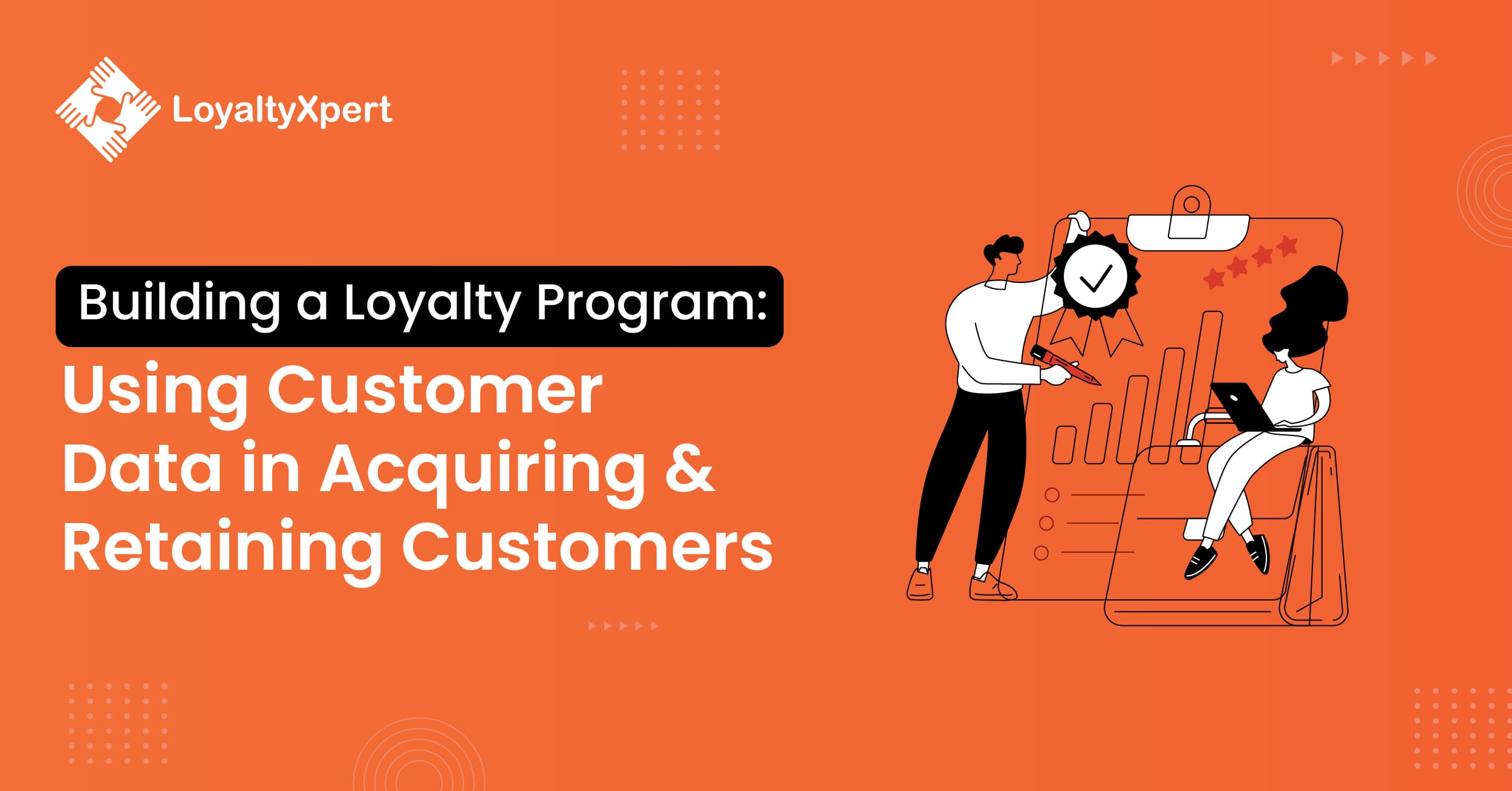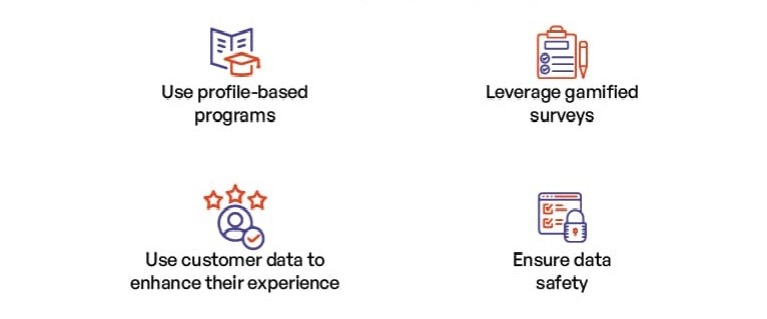
Building A Loyalty Program Help You Acquire And Use Customer Data
Author
Khushal Fadiya
Published on:
Apr 6, 2023
Table of Content
See How Our Loyalty Program Can Help You.
Let us guide you through our product features with Loyalty Experts
“Data is the new oil.” The famous quote of British mathematician Clive Humby is so true in the digital era. When businesses collect accurate information, refine and structure it, then they can derive a lot of value from the available data. Collecting the right data can mean the difference between success and failure.
When it comes to collecting data from customers, businesses use a wide range of techniques. Some of them buy data from data brokers (data service providers), while some collect data directly from their customers and business partners.
Out of several ways, leveraging loyalty programs to collect zero-party and first-party data is extremely innovative and impactful. Why’s that? Well, let’s take a look at these stats.
A survey conducted by Accenture taking 8000 customers from all over the globe found that 83 % of them are willing to share their data with brands if they receive personalized experiences. That’s a huge number! Imagine the amount of data any business can collect if it simply tells its loyalty program members to provide some key data to receive customized rewards.
Another customer experience survey conducted by Genesys taking 5,000 participants found that almost 40 % are willing to share their data if they are monetarily compensated. And a fifth of the participants is willing to share their data if they get discounts. This also perfectly aligns with the loyalty programs’ purpose, which is to reward customers for their loyalty.
In this blog post, we have discussed the types of data businesses can collect by using their loyalty programs. Also, how businesses can convince their customers to share their relevant personal information. Read on to gain more insights.
Types of data businesses can collect using loyalty programs
By using loyalty programs, businesses can collect two types of data:

1. Zero-party data: It’s the data that a customer shares willingly with a brand. The data can cover a wide array of topics ranging from how satisfied they are with the products and services as well as their purchase plans.
2. First-party data: It’s the data that a business collects from its customers through its website, mobile application, and point of sale. Some of the first-party data are time spent on the website, click-through rate, bounce rate, customer’s website behavior, purchase history, and more. It’s considered an accurate and reliable type of data and it comes with minimum privacy concerns.
Note: A new study found an interesting thing about data and personalization. As per the research, seven out of every ten customers are okay with personalization only if it involves first-party data. To put it another way, customers don’t want brands to collect data on them from third parties!
[pafe-template id=”10457″]
How to collect relevant customer information using loyalty programs?
When it comes to collecting relevant personal information of customers, businesses can use some smart techniques to gain key data and use it to strengthen customer loyalty.

1. Use profile-based programs
Over the last few years, many businesses are creating profile-based loyalty programs. By doing so, they get their customers to fill up their respective profiles with relevant information. Customers with incomplete profiles don’t get to be a member of the loyalty program till they have provided all the required information.
2. Leverage gamified surveys
Another excellent way of collecting relevant customer data is by using gamified surveys. In this, businesses use game elements to make their surveys interesting and engaging, which encourages their customers to participate in the studies. Recent studies show that gamification increases engagement by 50 percent.
3. Be transparent and tell your customers that you are using their data to enhance their experience
As per a Salesforce study, three out of five customers are willing to provide relevant personal data if businesses are transparent about how they will use the data and it benefits the customer. If you plan to collect customer data to customize your loyalty programs, then you must tell your customers, channel partners, and influencers about it at the outset.
4. Ensure data safety
After telling your customers why you want to collect their data, you must give them the confidence that their data is safe with you. After all, a majority of customers value privacy over personalization when it comes to sharing their data. The only way to do this is by ensuring data safety and taking all possible steps to prevent data theft.
This is where selecting the right loyalty program software as well as a reliable and reputable solution provider can be extremely beneficial. Equipped with many advanced features, sophisticated loyalty software can reinforce data security.
All in all,
Collecting customers’ and business partners’ data is a crucial process for every business. It not only enables them to know their customers, channel partners, and influencers in a much better manner, but also it helps them to create effective retention strategies. This is where loyalty programs can be immensely helpful. They not only automate manual data collection but ensure that customers and business partners provide all relevant information.
At LoyaltyXpert, we have helped a wide range of businesses create effective loyalty programs. In addition to that, we also helped them acquire all the necessary data from their customers and business partners. If you’re interested to know how loyalty programs can help you collect high-quality customer data, contact us today to get a free demo.
FAQs
Khushal Fadiya
The driving force behind LoyaltyXpert, has poured his heart and soul into nurturing and growing the company, which he proudly considers his "baby." With an unwavering passion for technology, Khushal has seamlessly integrated his love for tech into his role as Associate Director, where he continues to play a pivotal role in the company’s ongoing success and innovation.



